Several countries have been celebrated for their success in curtailing the Covid-19 pandemic — Iceland, New Zealand, Mongolia, Hong Kong, Taiwan — but Vietnam, a nation of 95 million people that borders China, has recorded only 334 total infections and 0 deaths. 0 deaths. They are currently on a 61-day streak without a single community transmission. (For reference, the US has recorded 2.1 million cases and more than 115,000 deaths with just 3.4 times the population of Vietnam.)
How have they done it? They acted early and aggressively.
Experts say experience dealing with prior pandemics, early implementation of aggressive social distancing policies, strong action from political leaders and the muscle of a one-party authoritarian state have helped Vietnam.
“They had political commitment early on at the highest level,” says John MacArthur, the U.S. Centers for Disease Control and Prevention’s country representative in neighboring Thailand. “And that political commitment went from central level all the way down to the hamlet level.”
With experience gained from dealing with the 2003 SARS and 2009 H1N1 pandemics, Vietnam’s government started organizing its response in January — as soon as reports began trickling in from Wuhan, China, where the virus is believed to have originated. The country quickly came up with a variety of tactics, including widespread quarantining and aggressive contact tracing. It has also won praise from the World Health Organization and the CDC for its transparency in dealing with the crisis.
From the BBC:
Vietnam enacted measures other countries would take months to move on, bringing in travel restrictions, closely monitoring and eventually closing the border with China and increasing health checks at borders and other vulnerable places.
Schools were closed for the Lunar New Year holiday at the end of January and remained closed until mid-May. A vast and labour intensive contact tracing operation got under way.
“This is a country that has dealt with a lot of outbreaks in the past,” says Prof Thwaites, from Sars in 2003 to avian influenza in 2010 and large outbreaks of measles and dengue.
“The government and population are very, very used to dealing with infectious diseases and are respectful of them, probably far more so than wealthier countries. They know how to respond to these things.”
By mid-March, Vietnam was sending everyone who entered the country - and anyone within the country who’d had contact with a confirmed case — to quarantine centres for 14 days.
Costs were mostly covered by the government, though accommodation was not necessarily luxurious. One woman who flew home from Australia — considering Vietnam a safer place to be - told BBC News Vietnamese that on their first night they had “only one mat, no pillows, no blankets” and one fan for the hot room.
Forced bussing to quarantine centers in the US, could you even imagine? Better that hundreds of thousands of people die, I guess.
The Vietnamese health system also implemented aggressive contact tracing:
Authorities rigorously traced down the contacts of confirmed coronavirus patients and placed them in a mandatory two-week quarantine.
“We have a very strong system: 63 provincial CDCs (centers for disease control), more than 700 district-level CDCs, and more than 11,000 commune health centers. All of them attribute to contact tracing,” said doctor Pham with the National Institute of Hygiene and Epidemiology.
A confirmed coronavirus patient has to give health authorities an exhaustive list of all the people he or she has met in the past 14 days. Announcements are placed in newspapers and aired on television to inform the public of where and when a coronavirus patient has been, calling on people to go to health authorities for testing if they have also been there at the same time, Pham said.
More from Axios and The Guardian.

For three weeks in late January and early February, I travelled to Asia, spending two weeks in Saigon, a few days in Singapore, and about 48 hours in Doha, Qatar. Here are some of the things I saw and did and ate. Note: this is a long post, maybe the longest thing I’ve posted here in many years. But I think it’s a quick read — pack a snack, stay hydrated, and you’ll be alright.
Saigon, Vietnam
I flew to Saigon via Doha on Qatar Airways. On my seatback screen, I watched the flight map as we flew a precise path with several course correcting turns that you don’t find in a usual great circle route. We flew over Turkey and Iraq and then out over the Persian Gulf, being very careful not to cross into the airspace of Syria, Iran, Kuwait, or Saudi Arabia — an aerial expression of Middle East tensions & alliances.
On my first full day, I arranged to go on a street food tour via motorbike. My guide, a local college student, picked me up at my apartment and, along with another guide & fellow tourist, we ate some bun bo hue (beef noodle soup), banh mì (pork sandwich), bap xao (stir-fried corn), com tam (broken rice w/ pork), drank some tra rau bap (corn silk tea), visited the flower market, and enjoyed a leisurely and engaging chat at a coffee shop. I did a food tour to kick off my time in Mexico City as well and would recommend it as a great way to meet some locals and quickly get the lay of the culinary land, which you can use as a blueprint for the rest of your trip.
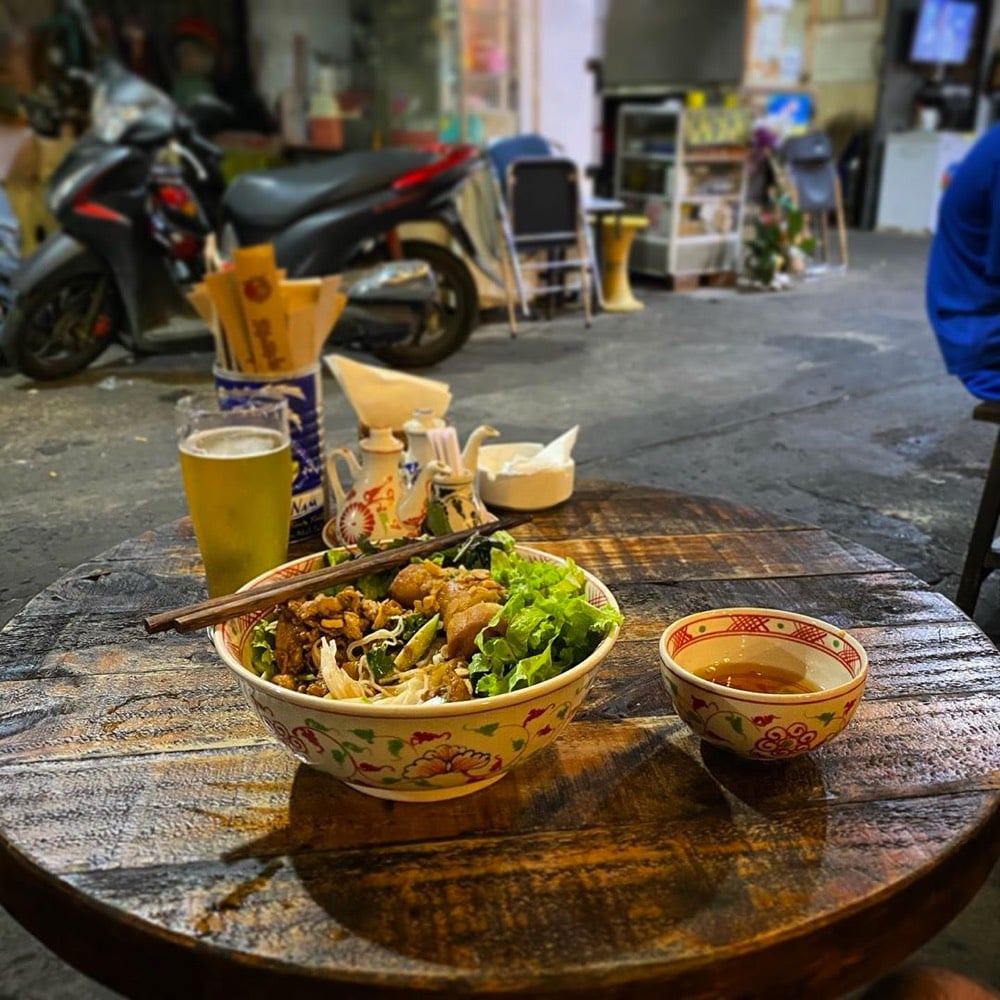
The food here is off the chain. Street food is generally safe to eat, where all the good stuff is, and a full meal is never more than a few bucks. Some of my favorites were banh mì, bun cha (pork w/ rice noodles), and bo la lot (beef wrapped in lolot leaves).
Before I went, I did a bunch of research on specific places to eat, which turned out to be not so useful because about half of the places I’d flagged had permanently closed. In some cases, not only was the restaurant or food cart gone, whole blocks had been razed to make way for an entirely new buildings. Some of these missing places had just been written about a year or two ago, but the pace of change in Saigon is unimaginably fast. Locals I talked to said it feels like an entirely new city every few years.
Founded by a pair of Japanese expats, Pizza 4P’s makes excellent pizza. The growing chain also makes their own burrata and mozzarella in-house.
Mr. Masuko said he leased an alley-side building in Ho Chi Minh City and invested about $100,000 of his savings into a renovation, kitchen gear and other start-up essentials. He and a Japanese employee, Keinosuke Konuki, taught themselves how to make mozzarella by watching a YouTube video.
I also had one of the best bowls of ramen I’ve ever had at Tomidaya in Little Toyko, a tiny place with only 8 seats at a counter. The shoyu was so good I went back a few days later for tsukemen (which was not quite as good but still very tasty).
Craft beer is growing in popularity in Vietnam and the cocktail scene is well established. The Vietnamese palete tends to run sweeter than in America, so go-to cocktails here used to lean towards the tiki end of the spectrum, but now is more varied. Thanks to my pal Brown, I got to visit the tiny speakeasy tucked away behind a hidden door in The Studio Saigon, where artist/bartender Richie Fawcett served up a couple of delicious drinks, including a barrel-aged whiskey cocktail that he smoked with some Irish peat right in front of us.
The official English name for Vietnam’s largest city is Ho Chi Minh City. But locals still call it Saigon (or Sài Gòn), particularly when referring to the central districts. It’s a bit like how New York or NYC refers just to Manhattan.
The War Remnants Museum (formerly known as the Exhibition House for US and Puppet Crimes) is a must-visit if you’re in Saigon. It’s an eye-opening look at how the American role in the Vietnam War (which in Vietnam was known as the Resistance War Against America or the American War) was perceived by the Vietnamese. The photographs showing the damage done by Agent Orange and the almost casual brutality against Vietnamese civilians (including women & children) by US soldiers were really hard (but necessary) to look at. John Lennon’s Imagine was playing on a continuous loop in the lobby of the museum.
I ended up being in Vietnam for Tet, the lunar New Year, which in terms of celebratory scale is like Christmas, Hanukkah, Thanksgiving, and New Year’s all rolled into one holiday that lasts for several days and reverberates for a few weeks. I hadn’t exactly planned on this timing, but having read about the Tet experience on Legal Nomads, I was prepared.

Most of the city was shut down for the holiday — the first day of Tet is a day for family and I saw people spilling out into the alleyways, eating and drinking and laughing — but it wasn’t that hard to find dinner or a place to stop for tea. The only time I really felt the Tet crunch was when I needed to buy a new phone (more on that in a bit) but couldn’t because all of the electronics stores were closed. Most of the time, though, I was thankful for the slightly slower pace and festive atmosphere.
Travel tip: find a rooftop bar in whatever city you’re in and pop in for a drink around sunset.
I’m always interested in cities where a particular mode of transportation sets the tone for everything else. In much of the US — particularly in places like LA, Dallas, or Raleigh — the car reigns. In Copenhagen and Amsterdam, it’s the bicycle. You could make the argument that in Manhattan, the dance of the streets revolves around the pedestrian. As a city, Saigon is defined by the motorbike. They overwhelm every other mode of transportation here — cars and pedestrians must tailor their movements to the motorbike swarm.
Because of the motorbikes, the process for crossing the street on foot in Saigon is different than in a lot of other places. You basically just wait for any buses (which will absolutely not stop for pedestrians) or cars to go by and then slowly wade out into traffic. Do not make any sudden movements and for god sake don’t run. The motorbike swarm will magically flow around you. It’s suuuuuper unnerving the first few times you do it, but you soon get used to it because the alternative is never ever getting across the street.
The motorbikes make walking around Saigon absolutely exhausting.1 It’s not just crossing the street. You literally have to be on the lookout for them everywhere. They drive up on the sidewalks. They drive into and out of houses and buildings, turning every doorway into a potential intersection. Having to look both ways every few seconds when you’re walking 6 or 8 miles a day around the city really drains the ol’ attention reserves.
Things I saw carried on motorbikes in Saigon, a non-exhaustive list: trees, dogs, tiny babies, ice (for delivery to a drinks cart, the ice block was not even strapped down), a family of five, a dessert cart, an entire toy store, a dried squid shop, and 8 huge bags of clams.
I spent a worthwhile morning exploring the antique shops on Le Cong Kieu street. Many of the shops carried the same sorts of items, so it got a little repetitive after awhile, but the shops with the more unique items were worth the effort.
The hip coffee shops in Saigon look much the same as those in Portland, Brooklyn, Berlin, or Mexico City.

Designed by architect Ngô Viết Thụ, the Independence Palace was the home and office of the South Vietnamese President during the Vietnam War. After the North Vietnamese capture of the building effectively ended the war in 1975, the palace was preserved as a historical site, a time capsule of 60s and 70s architecture and interior design. I spent half a day wandering the palace taking photos like crazy. Lots of Accidentally Wes Anderson material there.
The oranges in Asia are green?
An American expat I met in Saigon said that American veterans who fought in Vietnam are now retiring here, a fact which I found to be a) true and b) deeply weird for a number of reasons. Here’s a recent LA Times article on the phenomenon.
Rapid growth in Vietnam and its Southeast Asian neighbors has created a situation that would have been unthinkable in the past: Aging American boomers are living a lifestyle reminiscent of Florida, Nevada and Arizona, but in Vietnam. Monthly expenses here rarely exceed $2,000, even to live in a large unit like Rockhold’s, including the help of a cook and a cleaner. The neighbors are friendly: A majority of Vietnamese were born well after the war ended in 1975, and Rockhold says he has rarely encountered resentment, even when he talks about his service as a combat veteran.
The vast majority of the owners in his apartment building are members of Vietnam’s burgeoning urban middle class; many work in government or in education, and can afford to take vacations abroad. He estimates that no more than 1 in 5 residents in the 25-floor complex are foreigners.
“The Vietnamese were extremely nice to me, especially compared to my own country after I came back from the war,” Rockhold said at a coffee shop recently inside a polished, air-conditioned office tower that also houses a restaurant and cinema.

And last and certainly least, my phone was stolen while I was in Saigon. I’d really hoped that 2020 was going to be the year that I’d avoid making a blunder that would cost me thousands of dollars, but I’d neglected to pay sufficient attention to this bit in the Legal Nomads piece about Tet:
Unfortunately, the city also enters into what is locally known as “stealing season” — a proliferation of petty crimes like phone and purse theft, with the money used toward paying for these Tet gifts. In the weeks leading up to Tet and shortly thereafter, locals would come up to me on the street mimicking someone making off with my bag, a warning to keep an eye on belongings. Several friends found their phones snatched out of their hands in mid-conversation during this time, though no one had any more significant issues (e.g. there were no violence or armed muggings) to report.
It was the second day of Tet and I had just gotten off a motorbike taxi in front of a cafe in a tony part of town. I pulled out my phone to check on something quickly and was about 2 seconds away from putting it in my pocket and going into the cafe when a guy on a motorbike rode up onto the sidewalk — a totally normal thing here, so I didn’t think anything of it — and snatched my phone right out of my hand. I swore at the guy and ran after him for about two steps before I realized a) he was already halfway down the block and b) no one within earshot spoke English well enough to help me quickly enough to chase the guy down or flag down a police officer. The phone was gone.
Luckily, I had my iPad in my backpack, so I went into the cafe and deactivated the phone with Find My. For about an hour, I stewed and felt violated & pissed that I had been careless. I’ve had mixed experiences with solo travel — it’s hard sometimes! — so some despondency along those lines crept in too. I posted an Instagram Story about the theft (w/ my iPad) and some kind and wise words from my pals Craig and Stewart got me back on the right track. Stewart in particular reminded me that events like this are “the tax we pay on traveling” and that “maybe we don’t pay it every trip, but it comes around eventually”.
So yeah anyway, that shitbird didn’t ruin my trip — although being without a phone (no maps, no rideshare apps, no texting to coordinate meetups, no translation app) for a couple of days definitely restricted my movements for a couple of days until the electronics stores opened after Tet. That dude’s year may have gotten off to an unlucky start by stealing from someone, but I’ll be damned if I’m gonna let losing some property set the tone for my year or change my affection for this city and its people.
Singapore
Singapore felt like the future, full stop. And it’s not just the incredible waterfall & tropical forest in the airport or the mid-building gardens in the skyscrapers. Energy-saving escalators ran slowly or not at all until human motion was detected. Infrared temperature scanners like this one were set up at the airport to automatically screen disembarking passengers for coronavirus-related fevers. Public transportation was fast, cheap, and ubiquitous — my train ride from the airport to downtown was ~$1.50. I exited the country via Automated Immigration — a machine scans your passport & thumb and you’re good to go. A vending machine made me a cup of fresh-squeezed orange juice, sealed with a thin plastic lid. A Buddhist temple I went to had self-serve offering kiosks. Everything was incredibly clean and just worked the way you thought it should — you could sense the organization and infrastructure behind every little thing. And did I mention the waterfall at the airport?!
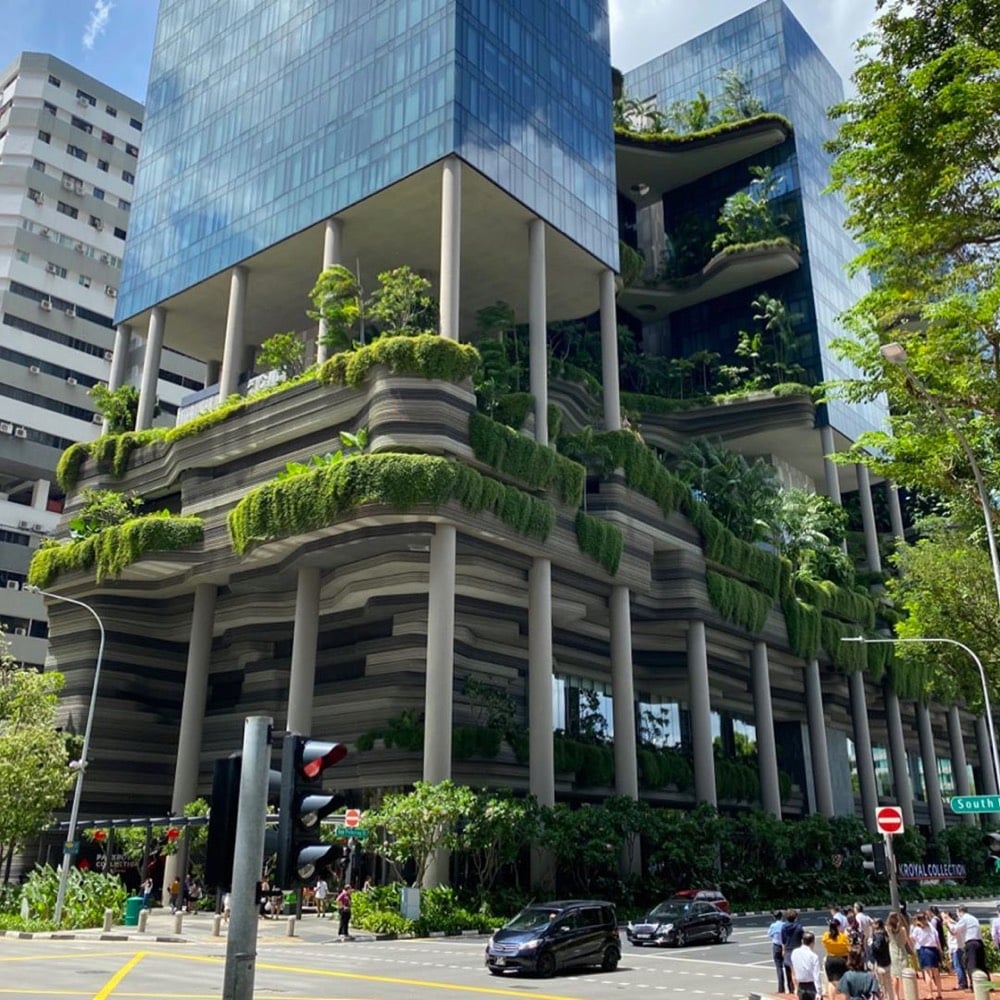
Coming from Vietnam, the food in Singapore was going to have to clear a high bar. And it did. Unlike in Saigon, where street food sellers filled any and every possible nook and cranny of the streets, sidewalks, and alleyways, always-on-brand Singapore has organized their street food vendors into communal hawker centers. In these centers, you can get the most delicious food from all around the world — Malay, Indian, Chinese, and Singaporean cuisines are among the most popular. I ended up eating almost all my meals at food centers — I visited Maxwell Food Centre, Chinatown Complex Food Centre, Hong Lim Food Centre, and Tekka Centre.
At the Chinatown Complex Food Centre, I waited in line for about 10-15 minutes to try the soya sauce chicken rice dish (just US$2!) at Hawker Chan, the first hawker stall ever to be awarded a Michelin star. This. Dish. Was. Amazing. I have never had chicken that tender & juicy. A revelation.
The Asian Civilizations Museum and the Singapore National Gallery were both great — definitely worth visiting if you’re in town for more than a day or two.
The Singapore Botanic Gardens, a UNESCO World Heritage Site, is a marvelous place to spend an afternoon wandering around. I particularly enjoyed the rainforest and the specialty gardens: the Evolution Garden, the Fragrant Garden, and the Healing Garden (full of plants with medicinal uses). (While looking at the website just now, I’m irritated to learn that I missed the Bonsai Garden. Dammit!) The National Orchid Garden was spectacularly beautiful — there’s an entry fee of $5 that’s well worth paying.1
The Atlas Bar is notable for its huge Art Deco space and extensive gin library. You can get a gin martini with gin made in the 1910s (~US$180) or have a G&T using one of their 1300 gins from around the world. Bar Stories was much more minimal and intimate with no cocktail menu at all — you just tell the bartender the flavors and spirits you’re into and they whip something up for you. You can check out some of their creations on Instagram.
For my first two nights, I stayed in a pod hotel. I opted for a private room and it was perfect. I had just enough space in my room to sleep and change — I was barely there for more than that as I spent most of my time exploring the city. The bathrooms were clean and private — and the showers were great, better than in many American hotels I’ve stayed in. They could do more to dampen the door noise, but other than that, it was really quiet.

For my last night, I splurged on a room at the Marina Bay Sands, aka the hotel with the infinity pool on the 58th floor overlooking the city. Was it worth the price? I don’t know, but the views from the roof were incredible and I did spend a lot of time relaxing by that pool.
Doha, Qatar
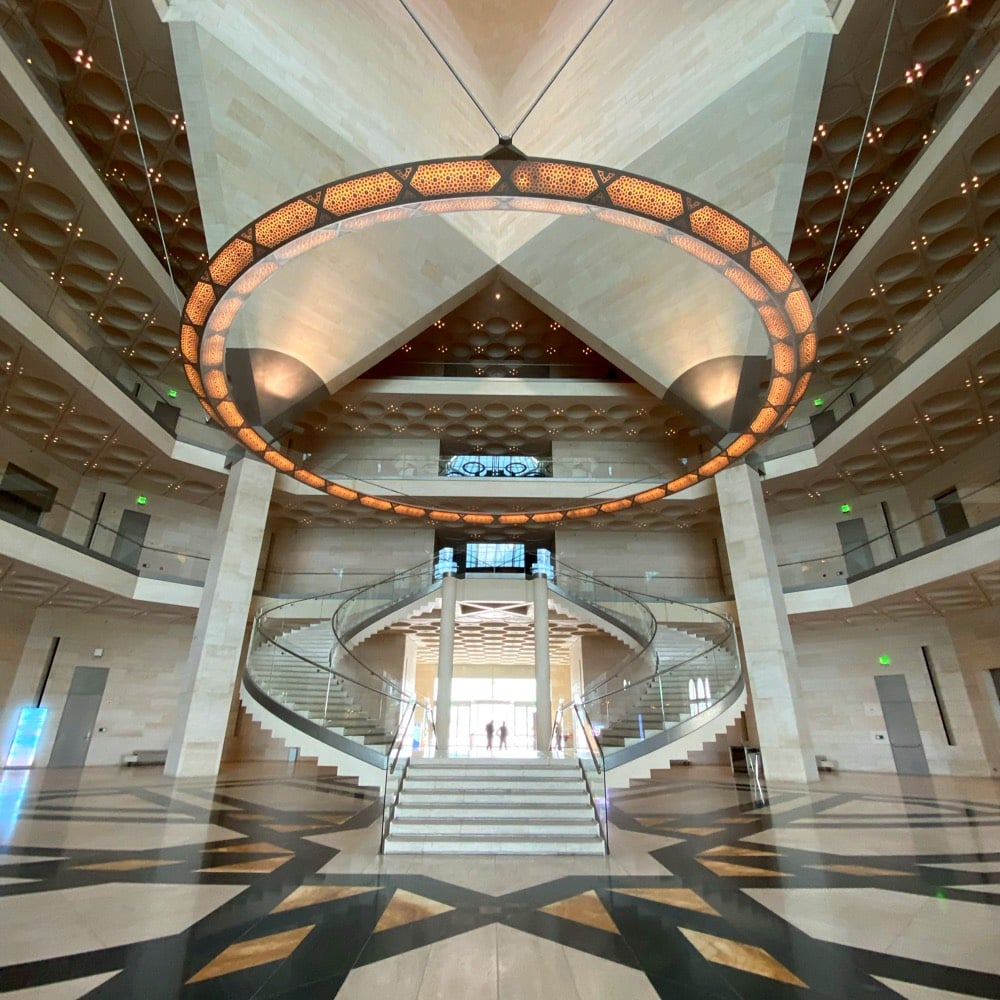
On my way home from Singapore, I spent about 48 hours in Doha, Qatar. In retrospect, I maybe should have opted for 2 more days in Singapore. Nothing against Doha, but I just didn’t have the energy to fully explore a third different place/culture in 3 weeks. (Still exploring my limitations…) I did have some great food there — including kofte at a Turkish restaurant and a simple fried halloumi sandwich I’m still thinking about more than a week later. The Museum of Islamic Art was fantastic and deepened my already significant appreciation of Islamic art.
Some miscellaneous thoughts and reflections
I met up with some kottke.org readers in both Saigon and Singapore. Thanks to Brown, Bryan, Joel, Corrie, and the Singapore meetup crew for taking me to some local spots with excellent food & drink, helping me understand a little bit more about Vietnamese & Singaporean culture, and making this solo traveller feel a little less solo. A special thanks to Brown for welcoming me into his home and introducing me to his family. After 20+ years of writing this site, it still blows me away how quickly complete strangers who read kottke.org seem like old friends. ♥
I posted several photos to my Instagram and also compiled Stories from Saigon and Singapore.
I got sick on the last day of the trip, which turned into a full-blown cold when I got home. I dutifully wore my mask on the plane and in telling friends & family about how I was feeling, I felt obliged to text “***NOT*** coronavirus, completely different symptoms!!”
Being in Asia during the early days of the coronavirus outbreak was an interesting experience. I wasn’t worried about contracting the virus — I kept my hands clean & sanitized, wasn’t interacting with anyone who had been to China recently, and wore my mask in the airport and on the airplane. By my last few days in Vietnam, the growing epidemic had the government worried, so people who normally wore masks only while riding motorbikes now wore them all the time in public. I observed that foreign tourists were more likely to wear masks than locals. Many businesses adopted a mandatory mask policy in their offices. Buddhist temples posted signs urging visitors to wear masks.
In the airport on my way to Singapore (and on the flight), every single person was wearing a mask, except for one guy who had no mask and a personal fan blowing air (and all the germs in the vicinity) right into his face. When I got to Singapore, way fewer people were wearing masks in the airport — probably only 50% — even though there were more coronavirus cases in Singapore than in Saigon. As I mentioned above, they had infrared scanners set up checking people for fever. At the Marina Bay Sands, all customers checking in had to have a temperature check with a hand-held thermometer — same if you wanted to use the hotel gym. I also got temp-scanned at one of the museums I went to.
This was my 7th long trip in the past two years and my longest one by more than a week. Despite the benefits of solo travel that I really enjoy, I’ve struggled at times with loneliness and getting a bit overwhelmed by having to figure everything out on my own in unfamiliar places. This trip, aside from a couple hours of stolen phone despair, was struggle-free — or rather the struggle was expected, manageable, and even welcome. Part of it is just practice — I feel like I’ve got the solo travel thing mostly down now. I’ve also had a couple of significant mindset shifts in recent months (like this one about winter weather) that have helped my general outlook. Working full time for two out of the three weeks I was gone helped anchor me to something familiar and provided some structure. And as I mentioned, meeting up with some friendly folks helped too.
And finally to finish up… Whenever I travel abroad, of course I have thoughts about the overall character of the places I go, but they’re based on such an incomplete experience of those places that I’m hesitant to share them. The Saigon metro area has a population of ~13.5 million and I was there for 2 weeks as a tourist, so what the hell could I possibly know about it beyond the superficial? What I mainly tend to come away with is how those places compare to the United States. What freedoms exist in a place like Vietnam vs Singapore vs Qatar vs the United States? How are those freedoms distributed and who do they benefit? And from what authority are those freedoms derived? The more places I go, the less obviously free the US feels to me in many ways, even though our country’s baseline freedom remains high (for some at least).
But the main observation I came home with after this trip is this: America is a rich country that feels like a poor country. If you look at the investment in and the care put into infrastructure, common areas, and the experience of being in public in places like Singapore, Amsterdam, Paris, and Berlin and compare it to American cities, the difference is quite stark. Individual wealth in America is valued over collective wealth and it shows.
I know that’s a bit of a downer to end on, but despite what you see on Instagram, travel is not always fun & games and often provides some potentially tough lessons and perspectives. You might get your phone stolen and come back feeling a little bit less great about your home country. Them’s the breaks, kid — welcome to the world. Thanks for following along as always.
We’re back in the US, but here’s one more post about our time in Vietnam.
1. On our way out to the Mekong Delta, we went through an industrial area, with machine shops, brick-making facilities, and the like. As we drove, we passed a three-wheeled bicycle that you see all over in Vietnam, with a cart in the front over two wheels and the driver over the rear wheel in the back. Lashed to the cart were several steel beams, probably 8-10 of them, each about 2 inches tall and 10 feet long, weight of the whole thing unknown, probably several hundred pounds on three bicycle wheels and a non-existant suspension system. And if that’s not odd enough to imagine, the whole thing was moving at around 30 mph, pushed along by a motorcycle whose driver had his left foot on the bolt of the right front wheel, while the respective drivers of the combined conveyance chatted away with little attention to their Rube Goldberg machine. Wish I’d have gotten a photo of it…it’s one of the craziest things I’ve ever seen.
2. Even though the streets of Saigon were packed with motorbikes, you saw very few people wearing helmets, and when they did, they tended to be construction helmets that weren’t even strapped to their heads.
3. I got an email from a reader a few days ago wondering why I was referring to Saigon as Saigon rather than its official name of Ho Chi Minh City, the name given to the city 24 hours after it fell to the North Vietnamese. Most of the city’s inhabitants still call it Saigon, so I was following suit. It’s also quicker to say and to type.
4. Cao Dai is a homegrown Vietnamese religion (established in the 1920s) that is an amalgamation of several other religions. On our trip to the Mekong Delta, we visited a Cao Dai temple, which looked like it was designed by Liberace’s interior decorator. Over the altar was a sculpture depicting Buddha, Confucious, Jesus, and Victor Hugo (!!), and I think they were all holding hands or something.
5. On one of the entry forms you need to fill out before arriving in Vietnam, it lists some things that are illegal to import into the country, including:
weapons, ammunition, explosives, military equipment and tools, narcotics, drugs, toxic chemicals, pornographic and subversive materials, firecrackers, children’s toys that have “negative effects on personality development, social order and security,” or cigarettes in excess of the stipulated allowance.
Children’s toys? Negative effects on personality development, social order and security? Bwa?
6. I can’t find too much about it online, but one of the more interesting things we saw in Saigon was the photography exhibit at The War Remnants Museum. The exhibit consists of hundreds of photographs of the Vietnam War (the Vietnamese call it the American War) taken by some of the best photojournalists who were working at the time, including Larry Burrows, Henri Huet, Horst Faas, Huynh Thanh My, Robert Capa, and Kyochi Sawada. A powerful and moving record of a tumultuous period in history.
7. Speaking of The War Remnants Museum (which was formerly called The War Crimes Museum and was a little more one-sided in the past), it wasn’t until a couple days after I’d gone that I realized that remnants referred to all of the stuff that the US had left in Vietnam after the long conflict, literally the leftovers of war. Tanks, planes, cars, helicopters, guns, photography, children deformed from the effects of Agent Orange, a population depleted of young men, horrific memories, and, finally, a united Vietnam.







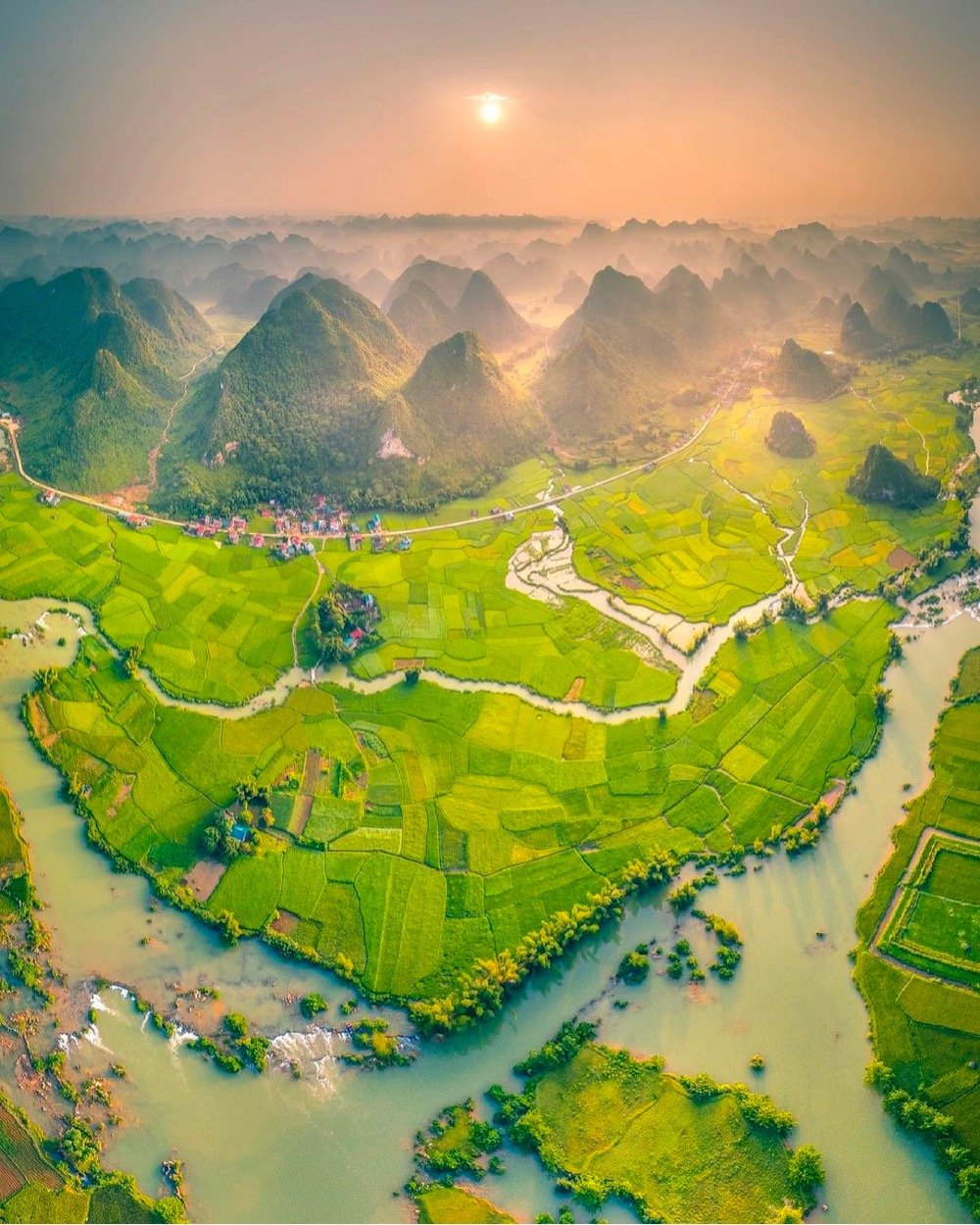









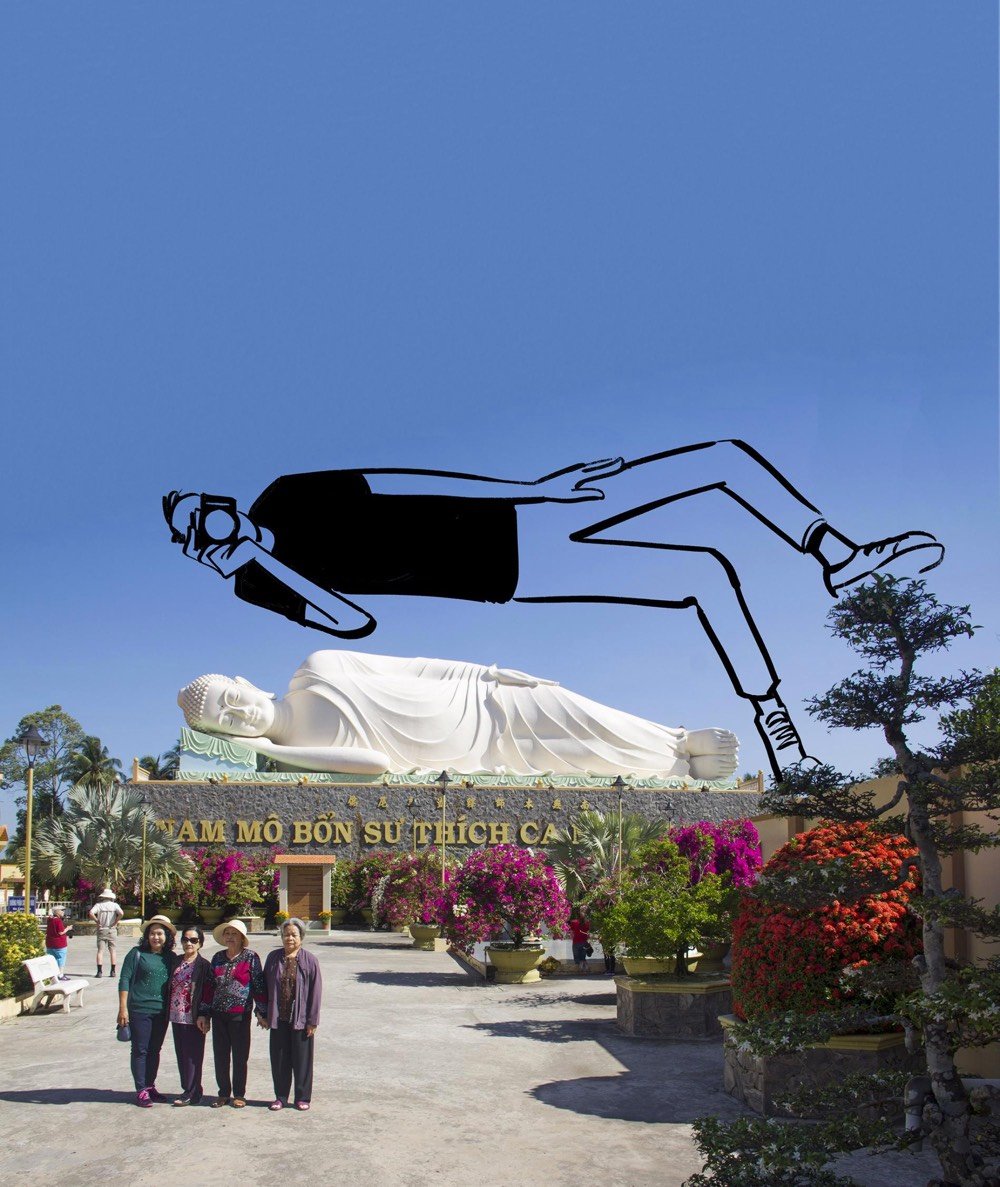
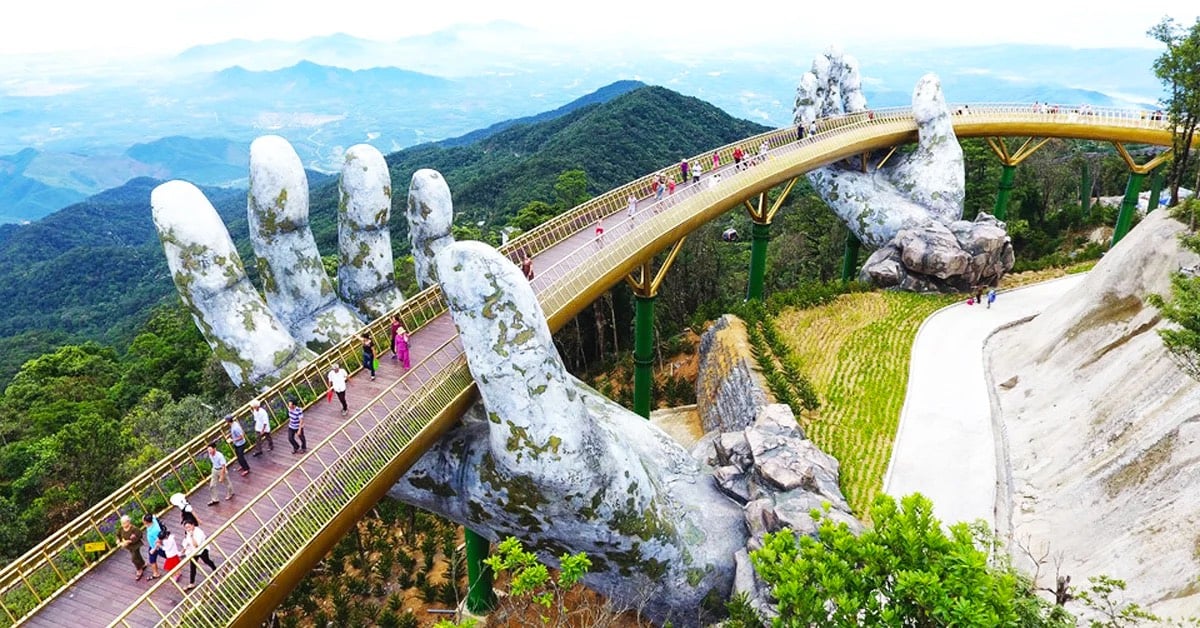

Stay Connected